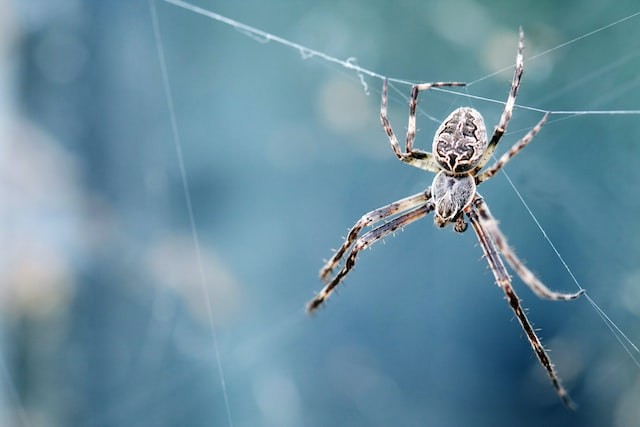Although spiders are often considered creepy and crawly, certain species may be becoming less intimidating due to a loss of sight. A recent study, which was published in the journal Molecular Phylogenetics and Evolution, has discovered seven previously unknown species of funnel-web spider inhabiting multiple caves in Israel. Interestingly, all of these spiders are in the process of evolving to become blind, at various stages of the adaptation.
The scientists manually gathered the spiders and analyzed their physical characteristics, as well as extracted DNA samples to compare them to other species, to study their evolutionary process. Out of the seven recently discovered species, five of them had diminished eyesight, while the remaining two were completely blind, with their eyes having almost entirely vanished.
The scientists examined various spider species, including those that were previously documented as well as those that were newly discovered, and observed that some caves were exclusively inhabited by spiders living in the darkness or twilight zones deep inside the caves. In contrast, other caves contained spiders residing near the cave entrances, which still relied on light to some degree. In some caves, both types of spiders were present, with their level of blindness becoming more severe the deeper into the cave they were found. This loss of vision over time is a phenomenon observed in other animals, such as the Mexican blind cavefish.

One of the previously known spider species found by the researchers, Tegenaria pagana. This species still has its eyes, and is found near to cave entrances
Impairing Vision Over Time
Animals residing in the deep, lightless regions of a cave don't rely on eyesight, so there is a little evolutionary incentive to maintain vision if the metabolic cost of eyes is exceedingly high, or if mutations randomly impair vision over time. Damian Moran, a researcher at Seafood Technologies Group in Nelson, New Zealand, explained to National Geographic in 2015 that "any creature living in total darkness and not requiring vision to locate food or evade predators will not have a strong need for eyesight or visual centers in the brain."
Over time, a species may develop blindness due to the lack of evolutionary pressure to maintain vision in complete darkness. However, many species inhabit dimly lit environments and have managed to preserve their eyesight. According to Efrat Gavish-Regev, a co-author of the paper and an ecologist at HUJI, "Among the spiders we found, five were unique to different caves, and the two other species were found in several caves in the Galilee and in caves situated at the Ofra karst field, which is now under threat due to construction plans," as per Newsweek.
The scientists also discovered that the spiders that had adapted to the dark zones of the caves by losing their eyesight were unable to survive outside of the cave's darkness. This suggested that there was limited breeding between populations residing in the dark regions of the cave and those living near the entrance, despite being geographically near to one another. Moreover, the researchers determined that the deep-cave spiders had a closer evolutionary relationship to deep-cave species in the Mediterranean region, rather than their immediate neighbors living near the entrance of the cave in Israel.
ALSO READ: Australian White-Tailed Spiders: How Much Can Their Bites Harm The Human Body
'Eye-Opening' Preservation Efforts
According to Gavish-Regev, the study revealed an unexpected discovery that the newly identified species have a closer evolutionary relationship to species inhabiting caves in the Mediterranean regions of southern Europe than to those residing in nearby cave entrances in Israel. The scientists proposed that a solitary species could be the forefather of all the partially or completely blind cave spiders, and the different degrees of sight loss might have independently evolved in each branching population. They also recommended that the deep-cave and cave-entrance branches could be derived from distinct populations rather than a single branch that moved deeper and deeper into the cave, gradually losing its eyesight.
When similar evolutionary traits appear as a result of similar environmental pressures rather than a shared ancestor who possessed that trait, this is referred to as convergent evolution. Wings in bats, birds, and flying insects are other examples of convergent evolution, as is the use of echolocation by bats and dolphins to detect prey and their environment. Echolocation is the process of using sound waves reflected from objects to locate objects. The original species may have gone extinct locally outside of the caves, leaving only their cave-dwelling descendants, according to the researchers' theory. Approximately five million years ago, during the early Pliocene era, climate change is thought to have caused this extinction event, which was the cause.
To Professor Dror Hawlena from The Hebrew University of Jerusalem's Department of Ecology, Evolution, and Behavior, the team is already seeing the effects of climate change on many habitats, which forces us to think about, maintain, and promote programs that include the preservation of underground habitats-many of which are already in danger. They added that locals must safeguard Israel's distinctive characteristics, safeguard its underground networks for the long term, and continue to investigate the processes that gave rise to these networks in the nation.
RELATED ARTICLE: Newly Discovered Spider Named After the Popular Disney Pixar Movie, Finding Nemo
Check out more news and information on Spiders in Science Times.














